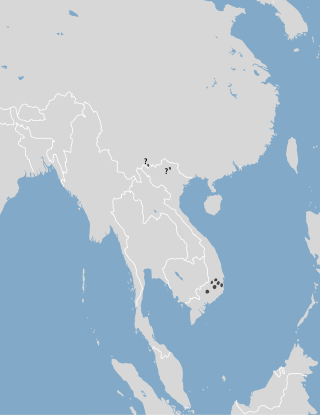
The family Talpidae includes the moles who are small insectivorous mammals of the order Eulipotyphla. Talpids are all digging animals to various degrees: moles are completely subterranean animals; shrew moles and shrew-like moles somewhat less so; and desmans, while basically aquatic, excavate dry sleeping chambers; whilst the quite unique star-nosed mole is equally adept in the water and underground. Talpids are found across the Northern Hemisphere of Eurasia and North America, and range as far south as the montane regions of tropical Southeast Asia.

The red-toothed shrews of the subfamily Soricinae are one of three living subfamilies of shrews, along with Crocidurinae and Myosoricinae. In addition, the family contains the extinct subfamilies Limnoecinae, Crocidosoricinae, Allosoricinae and Heterosoricinae. These species are typically found in North America, northern South America, Europe and northern Asia. The enamel of the tips of their teeth is reddish due to iron pigment. The iron deposits serve to harden the enamel and are concentrated in those parts of the teeth most subject to wear. Members of the genera Chimarrogale, Nectogale, Neomys (Nectogalini) and some members of Sorex (Soricini) are known as water shrews, due to having a semi-aquatic lifestyle.

The southern short-tailed shrew is a gray, short-tailed shrew that inhabits the eastern United States.

The subfamily Talpinae, sometimes called "Old World moles" or "Old World moles and relatives", is one of three subfamilies of the mole family Talpidae, the others being the Scalopinae, or New World moles, and the Uropsilinae, or shrew-like moles.

The shrew moles or shrew-like moles (Uropsilus) are shrew-like members of the mole family of mammals endemic to the forested, high-alpine region bordering China, Myanmar, and Vietnam. They possess a long snout, a long slender tail, external ears, and small forefeet unspecialized for burrowing. Although they are similar to shrews in size, external appearance, and, presumably, ecological habits, they are nevertheless talpids and considered true moles, as they share a full zygomatic arch with all other moles, while this arch is completely absent in shrews.

The eastern mole or common mole is a medium-sized North American mole. It is the only species in the genus Scalopus. It is found in forested and open areas with moist sandy soils in northern Mexico, the eastern United States and the southwestern corner of Ontario in Canada.

The hairy-tailed mole, also known as Brewer's mole, is a medium-sized North American mole. It is the only member of the genus Parascalops. The species epithet breweri refers to Thomas Mayo Brewer, an American naturalist.

Oligoryzomys nigripes, also known as the black-footed colilargo or the black-footed pygmy rice rat, is a rodent in the genus Oligoryzomys of family Cricetidae. Oligoryzomys nigripes is a species that has been further divided into different sister taxa throughout history. It is found in different countries in South America. It is a large species with long ears, dark yellow to dark brown upperparts, sharply delimited from the whitish underparts, and often a pink girdle on the chest. This species of rat spends much of its life among the trees. The karyotype is 2n = 62, FNa = 78–82.

The scaly-footed small-eared shrew is a species of mammal in the family Soricidae. It is found in Colombia and Ecuador.

The small-toothed mole is a species of mammal in the family Talpidae. It is found in Di Linh, in southern Vietnam, and Rakho near the border of Vietnam and China, and in southern Yunnan, China, near the Vietnamese border. It is likely that it has a broader distribution, especially in places between the currently known locations.

The Indochinese short-tailed shrew is a species of mammal of the family Soricidae found in China and Vietnam. The species is a semifossorial red-toothed shrew with a stout body and short, slender tail. Although this species was originally classified under Blarinella, recent Cytochrome b analysis suggests this species should be classified under a new genus, placing it in Parablarinella alongside one other species.

The Assam mole shrew is a species of red-toothed shrew endemic to northeast India.

The giant mole shrew is a species of red-toothed shrew native to the southeastern slopes of the Himalaya of Bhutan and India.

The Taiwanese mole shrew is one of four species of red-toothed shrews in the genus Anourosorex. It is endemic to Taiwan.

Asian mole shrews (Anourosorex) are a genus of shrews that resemble moles, from China, Taiwan, India, and Indochina. They are the only known genus of the red-toothed shrew tribe Anourosoricini. The four known species are:















